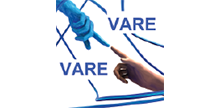3D Scenery Learning on Solar system by Using Marker Based Augmented Reality
- aDepartment of ECE, Karunya University, Multimedia University, Coimbatore, India
- cDepartment of Comp. & Inf., Multimedia University, Malaysia
- d Department of Sys. & Soft. Eng, Blekine Inst. of Tech., Sweden
- e Department of Teleco. En, Czech Tech. University,Prague
Cite as
K.M. Sagayam, C.C. Ho, L. Henesey, R. Bestak (2018). 3D scenery learning on solar system by using marker based augmented reality. Proceedings of the 4th International Conference of The Virtual And Augmented Reality In Education (VARE 2018), pp. 139-143. DOI: https://doi.org/10.46354/i3m.2018.vare.021
Abstract
Augmented reality (AR) is the technology that works on computer vision based recognition algorithms to
augment sound, video, graphics and other sensor based inputs and real world objects using the camera of your device. AR applications can become the backbone of education industry. Apps are being developed which are embed text, images and videos, as well as the real-world curriculums. With help of AR, travellers can access real-time information of historical places just by pointing their camera viewfinder to subjects. There are
two major forms of augmented reality, marker-based AR and markerless AR. A marker based AR works on concept of target recognition. The target can be 3D object, text, image, QR Code or human-face called markers. Whereas marker-less AR, also known as location-based AR, uses GPS of mobile devices to record the device position and displays information relative to that location. Few drawbacks in marker-less AR like house resolution, size variation and time delay can be solved using marker based algorithms such as marker detection, triangle similarity for marker to camera distance and corner detection.
References
- Jung-Chuan Yen, Chih-Hsiao Tsai, Min Wu, “Augmented Reality inthe Higher Education: Students’s Science concept learing andacademic achievements in astronomy,” volume 103, pp.165-173,November 2013.
- Aw Kien Sin and Halimah Badioze Zaman, ”Tangible interfaces in learing astronomy through augmented reality book based educationaltool ”, vol.5857, pp.302-313, 2009.
- Sylvain Bernhardt , Stéphane A. Nicolau , Vincent Agnus, Luc Soler,Christophe Doignon , Jacques Marescaux, ”Automatic Localization of endoscope in intraoperative CT image: A simple approach to augmented reality guidance in laparoscopic surgery”, volume 30, pp.130-143, May 2016.
- Jorge Martín-Gutiérreza, Manuel Conterob, Mariano Alcañiz, ”Augmented Reality To Training Spatial skills”, volume 77, pp.33- 39, 2015.
- Gue won Rhee etal, ”Tangible authoring of 3D Visual scenes indynamic augumented reality environment” volume 62, ,pp.107-119, January 2011
- Danakorn Nincareanaetal, ”Mobile Augmented Reality: the potential for education”, volume 103, pp.657-664, 26 November 2013.
- Antonia Cascalesa, David Pérez-López, ”Study on Parents’ Acceptance of the Augmented Reality Use for Preschool Education”volume 2013.
- Sugang dong Amir H Behzadan Feng chen “collaborative visualization of engineering process using tabletop”, volume 55, pp.45-55, January 2013.
- Javier Fombona Cadaviecoa, Maria de Fatima Goulao, Alberto Fernandez Costales, ”Using Augmented Reality and m-learning to optimize students performance in Higher Education”, volume 46, pp.2970-2977,2012.
- WannisaMatcha, Dayang RohayaAwangRambli, ”Exploratory study on collaborative interaction through the use of Augmented Reality in science learning” volume 25, pp.144-153, 2013.
- Jorge Martín-Gutiérreza, Manuel Conterob, Mariano Alcañiz,”Improving Strategy of Self-Learning in Engineering:Laborotarieswith augmented Reality”, volume 51,DOI:10.1016/jsbspro.2012.08.249
- Hirosuke Hori etal, ”Augmented Reality-based Support System forTeaching Hand-drawn Mechanical Drawing”, volume 103,DOI;10.1016/j.sbspro.2013.10.323,nov26,2013
